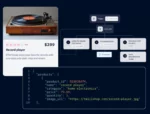Despite the uptake of SharePoint 2010, many organizations are doing quite well with their 2007—and some cases, 2003—installations, thank you very much! Yet the move they’ve been putting off, upgrading to 2010, has moved more squarely into the center of their radar. There are a couple of reasons for this.
First, Microsoft is expected to announce the next version of SharePoint some time late this year. Depending upon the feature set, that might force the hands of some reluctant organizations to migrate, perhaps even beyond SharePoint 2010 to the newer release. People describe the different between SharePoint 2007 and SharePoint as revolutionary, and that drove much of the migration to that platform. SharePoint 2010, to the contrary, has been called evolutionary, without many of the truly compelling features that moved folks off 2003. Now, they’ll wait to see what SharePoint vNext has in store.
Second, Microsoft will discontinue formal support of SharePoint 2007 in October of this year. This can be a huge push to 2010, depending upon the size of an organization’s SharePoint installation. If it’s small and not utilizing much of the complexity of SharePoint, it might not be a factor. If you have a big implementation, you might want to begin planning your migration to 2010, so that you can continue along with Microsoft support.
One way or the other, time is running out on 2007. If you haven’t yet, I would recommend you begin investigating what it will take to move your documents, workflows, sites and metadata to at least the 2010 version. Your time is at hand.
—David






